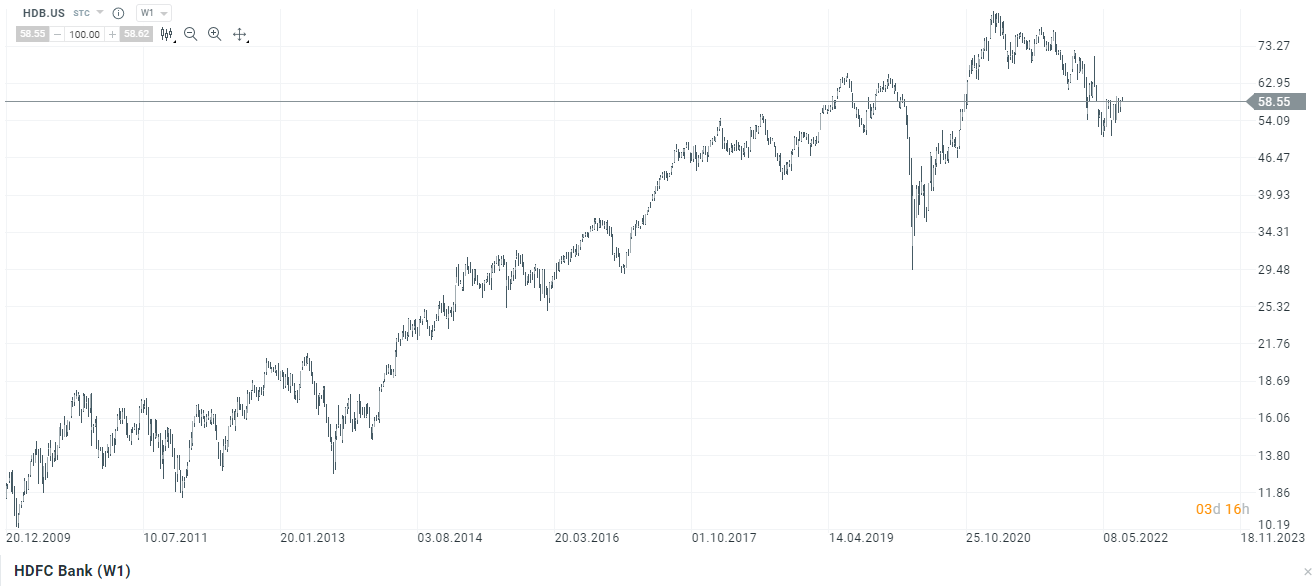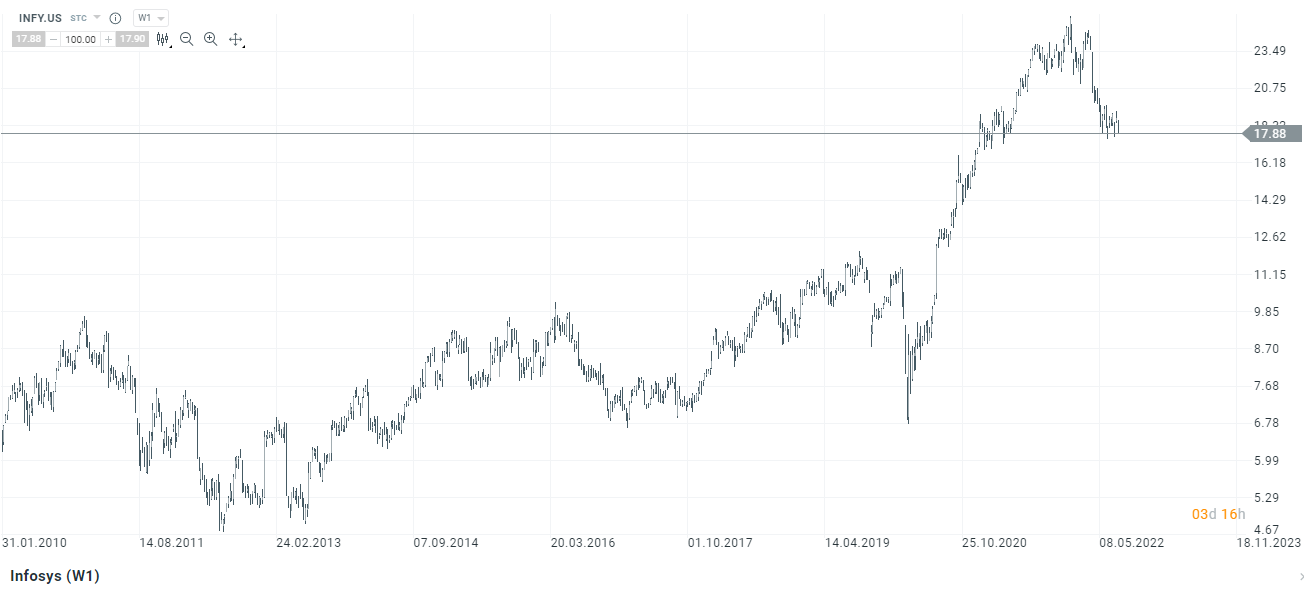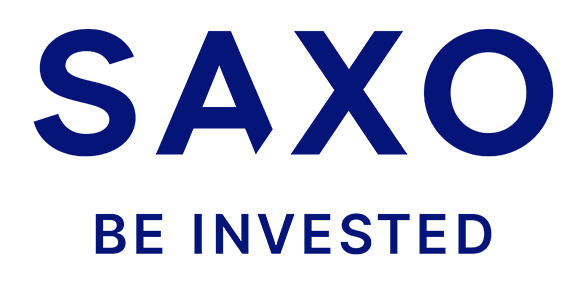Indian Stock Exchange - How to Invest in the Nifty 50 Index [Guide]
There is no need to convince anyone that the countries of Asia matter more and more in the world economy. However, it is usually equated with the growing political and economic position of China. Asia, however, is not only the Middle Kingdom. Another economic colossus is dynamically developing in the shadow of China - Indie. The country has a healthy demographic situation and is currently the 5th largest economy in the world. Over the past 20 years, the dynamic development of the Chinese economy has translated into a sharp increase in the prices of many Chinese companies. It is possible that in the coming decades there will be many interesting investment opportunities on the Indian market. However, for American and European investors, the aforementioned market is often terra incognita. In today's text we will try to explain what exactly is one of the most important benchmarks of the stock market in Mumbai - NIFTY 50 index. We invite you to read.
National Stock Exchange (NSE)
Investors associate the Asian market primarily with the stock exchanges in Tokyo, Hong Kong and Singapore. However, one of the key markets is NSE. National Stock Exchange is located in Mumbai. The stock exchange itself was established in 1992 in order to professionalize the capital market in India. Derivatives can be traded on the stock exchange since 2000. In 2021, the NSE exchange was recognized by the Futures Industry Association (FIA) for the largest derivatives exchange in the world in terms of the number of contracts concluded in one year. In the same year, the World Federation of Exchanges (WFE) ranked NSE 4th in terms of the number of transactions on the equity market. A year ago, the National Stock Exchange was ranked ninth in terms of market capitalization, which exceeded $ 9 billion. The index that brings together blue chip stocks is the NIFTY 3.
What is NIFTY 50?
NIFTY 50 is the benchmark for the largest and most liquid companies listed on the National Stock Exchange. The index was established in 1996. The base value for the index was calculated at 1000 points and the index has historical data dating back to November 3, 1995.
The index is the most important "base" for the most important financial instruments on the NSE stock exchange. NIFTY 50 futures are the most traded in the world (in terms of the number of contracts concluded). Additionally, the index is a benchmark for many financial products (ETFs, mutual funds, etc.). NIFTY 50 is an index calculated using the "free float market capitalisation weighted". This means that index shares are based on the capitalization of companies, less the free float ratio. The aforementioned methodology has been calculated since mid-2009, it replaced the calculation based solely on capitalization. It is worth mentioning that the composition of the index is changed every six months.
As at June 30, 2022, the most important sectors in the NIFTY 50 index were:
- Financial services - 35,1%
- IT - 15,9%
- Oil, Gas and other fuels - 14,8%
- Fast moving goods (FMCG) - 8,4%
- Automotive - 6,0%
In turn, the most important components of the NIFTY 50 index were:
- Reliance Industries - 12,9%
- HDFC Bank - 8,6%
- Infosys - 7,7%
- ICICI Bank - 7,1%
- Housing Development Finance Corporation - 5,7%
- Tata Consultancy Services - 4,9%
- Kotak Mahindra Bank - 3,5%
- ITC - 3,5%
- Hindustan Unilever - 2,9%
- Larsen & Toubro - 2,7%

IND 50 index chart (CFD on the NIFTY 50 index), interval W1. Source: xNUMX XTB.
How can you invest in NIFTY 50?
Exposure to the NIFTY 50 index can be obtained through a variety of solutions. An investor may use individual selection of companies from the index, or use collective investment instruments (investment funds, ETFs). In addition, the investor can use for this purpose derivatives where the underlying instrument is the NIFTY 50 index.
Each of the solutions has its advantages and disadvantages. In the case of individual selection of companies, the investor may choose the "best" components of the index. However, the downside is the amount of time you spend and the risk of betting on "wrong horses". In case of a mistake, the achieved rate of return may be much worse than the one generated by the index.
By taking advantage of the ETF offer, you consent to the purchase of the entire index. The rate of return will be slightly lower than the index as the value of the ETF is reduced by management fees. The undoubtedly simple investment is an upside. High management fees can be a problem for mutual funds.
In the case of derivative instruments, the investor must remember about the financial leverage, which, if used inappropriately (too high leverage), can significantly reduce the investor's account. Additionally, it is necessary to become familiar with the nuances of the derivative market (e.g. what is a forward price, spot price or implied volatility).
Selected components of the NIFTY 50 index
In this part of the article, we will briefly characterize selected components of the NIFTY 50 index.
Reliance Industries
It is a conglomerate that was founded in 1973 by Dhirubhai Ambani. The company operates in many industries. The most important ones include: energy, petrochemical, commercial, telecommunications, textile and media. The company structure is a bit complicated as Reliance has over 300 subsidiaries. In 2021, Reliance employed over 230 employees. It is one of the largest companies in the world. In 000, it was ranked 2021 on the Fortune Global 155 list. The most important segment for the company is O500C (oil-to-chemicals), which in the financial year 2 accounted for approximately 2022% of the company's revenues. This segment includes, among others oil processing plants or chemical companies. Other important segments for the company are Digital Services and the commercial industry. Reliance has approximately 63 thousand. Shops scattered all over India. In the technology industry, Reliance has a majority stake in Jio Platforms, which includes, among others telecommunications company Jio.
| Billion INR | 2019FY | 2020FY | 2021FY | 2022FY |
| revenues | 5 671,4 | 5 967,4 | 4 669,2 | 6 999,6 |
| Operational profit | 630,7 | 662,7 | 541,7 | 806,6 |
| Operating margin | 11,12% | 11,11% | 11,60% | 11,52% |
| Net profit | 395,9 | 393,5 | 491,3 | 607,1 |
Source: own study
HDFC Bank
The bank was founded in 1994 as a subsidiary of Housing Development Finance Corporation (HDFC), which currently holds a 25% stake in the bank. Currently, HDFC Bank is the largest private bank in India and one of the largest banks in the world (in terms of capitalization). It is also one of the largest employers in India, with over 140 employees. The company's activity focuses on granting consumer loans, car loans, housing loans, corporate loans and offering investment products. The bank has approximately 000 million customers, who are served by over 70 outlets and 6 bank outlets. Over 300% of all deposits in India are held by HDFC Bank.
| Billion INR | 2020FY | 2021FY | 2022FY |
| revenues | 667,6 | 791,7 | 936,7 |
| Net profit | 220,1 | 260,3 | 325,9 |
Source: own study

HDFC Bank stock chart, interval W1. Source: xNUMX XTB.
Infosys
It is an Indian company that works in the IT industry. It is one of the world's largest IT consulting and outsourcing companies. The company is one of the two largest companies in India operating in the IT industry (together with Tata Consultancy Services). The company was founded in 1981 by 7 engineers who created Infosys with a registered capital of $ 250. The company's debut on the stock exchange took place in 1993 and did not end with a great success. Due to little interest, Morgan Stanley had to "bail out" by purchasing a 13% stake in the company. At the end of the 2022 financial year, the company employed approximately 314 people. The company generates most of its revenues in North America (000%), followed by Europe with a 62% share. Infosys has 25 innovation centers, 14 of which are in the United States.
| Million USD | 2019FY | 2020FY | 2021FY | 2022FY |
| revenues | 11 799 | 12 780 | 13 561 | 16 311 |
| Operational profit | 2 731 | 2 748 | 3 350 | 3 778 |
| Operating margin | 23,15% | 21,50% | 24,70% | 23,16% |
| Net profit | 2 199 | 2 331 | 2 631 | 2 963 |
Source: own study

InfoSys stock chart, interval W1. Source: xNUMX XTB.
Tata Consultancy Services
It is part of the Tata Group. According to the data on the website, Tata Consultancy Services employs over 600 employees, including 000 women. Like Infosys, TCS deals with IT consulting and outsourcing. The origins of the company date back to 215 when Tata Computer Services was established. In 000, the company debuted on the stock exchange. Currently, the company operates in almost 1968 countries around the world. About half of TCS's revenues comes from North America, approximately 2004% is from Great Britain and continental Europe. Tata Consultancy Services provides its services to many industries, but BFSI (50%) dominates, i.e. companies from the financial sector (banks, insurers, etc.). Companies from the packaged food and retail industries are in the next position (32% of revenues). The company is a "cash machine", most of which has been handed over to shareholders (32%) in the last 15 years. It is worth mentioning that most of the company's growth has been achieved organically.
| Billion INR | 2019FY | 2020FY | 2021FY | 2022FY |
| revenues | 1 464,6 | 1 569,5 | 1 641,8 | 1 917,5 |
| Operational profit | 374,5 | 385,8 | 426,8 | 485,9 |
| Operating margin | 25,57% | 24,58% | 26,00% | 25,34% |
| Net profit | 314,7 | 323,4 | 324,3 | 383,3 |
Source: own study
Hindustan Unilever
It is one of the largest consumer goods companies in India. Hindustan is a subsidiary of the British corporation Unilever. The company was founded in 1931 as Hindustan Vanaspati Manufacturing as a subsidiary of Unilever. The name itself Hindustan Unilever has been used since 2008. It is worth mentioning that in 2020 the company merged with its subsidiary GSK (formerly GlaxoSmithKline). Currently, the portfolio of Hindustan Unilever includes 64 brands (including Cif, Domex, Dove, Taj Mahal, Hellmann's, Knorr and Lipton). The company divides its revenues into three categories: F&R (Food & Refreshment), household chemicals, and care and protection products. Thus, the company sells everything from ice cream and cleaning products to deodorants and creams. The company employs over 21 people.
| INR million | 2019FY | 2020FY | 2021FY | 2022FY |
| revenues | 389 810 | 394 930 | 468 070 | 521 570 |
| Operational profit | 83 150 | 88 590 | 105 520 | 117 660 |
| Operating margin | 21,33% | 22,43% | 22,54% | 22,56% |
| Net profit | 60 540 | 67 480 | 79 950 | 88 790 |
Source: own study
What can affect the value of the NIFTY 50 index?
The condition of the Indian and world economy
The index includes both companies operating mainly on the Indian market (Hindustan Unilever, HDFC Bank) and international corporations whose products are sold mainly on foreign markets (Infosys, TCS). For this reason, the index is influenced both by the condition of the world economy (for the most part), but some companies are more exposed to the domestic condition of the economy.
Inflation and the impact of the exchange rate
Another factor that influences the valuation of stock prices is inflation and the exchange rate of the Indian rupee. Inflation is a problem for companies having difficulty transferring rising costs to customers. In turn, companies that have "Pricing power" can easily pass the rising costs onto their customers. Another factor is the exchange rate. The weakening of the exchange rate is especially beneficial for exporters, as their products become "cheaper" on the world market, but the downside of the decline in the exchange rate is the reduction in the profitability of investments in the domestic currency.
Financial results of companies
In the long term, the company's improving financial results are the most important. Increasing revenues, profits and free cash flow (FCF) are solid arguments for long-term increases in stock prices. For this reason, it is worth following the financial results of companies included in the index. Especially those that have the greatest impact on changing the index value.
The inflow of foreign capital
Another factor influencing the index value is global capital flows. When developing markets are "in fashion" there is an inflow of capital, which raises the valuation of companies and translates into an increase in the value of the index.
NIFTY 50 futures
One way to invest in a NIFTY 50 index is to buy a futures contract on that index. The downside of this solution is that not all brokers offer direct access to the NIFTY 50 futures contract.
CFDs
A slightly more popular but much more accessible solution is speculation on contracts for exchange rate differences (CFD). NIFTY 50 index it is very rarely found in the offers of Forex brokers, but it is offered by, for example, the Polish Brokerage House X-Trade Brokers SA. The leverage on this CFD is 1:10.
| Broker |  |
| End | Poland |
| NIFTY 50 symbol | IND50cash |
| Min. Deposit | PLN 0 (recommended min. PLN 2000 or USD 500, EUR) |
| Min. Lot value | Price * $ 10 |
| Commission | - |
| Platform | xStation |
CFDs are complex instruments and come with a high risk of losing money rapidly due to leverage. From 72% to 89% of retail investor accounts record monetary losses as a result of trading CFDs. Think about whether you understand how CFDs work and whether you can afford the high risk of losing your money.
ETF on NIFTY 50
One of the most important ETFs with exposure to major Indian companies is iShares India 50 ETF (INDY). The benchmark for the ETF is the NIFTY 50 index. The issuer of the ETF is BlackRock. As of July 26, 2022, there were $ 556 million in assets under management (AUM). TER (total expense ratio) is 0,90% per annum.
Brokers offering stocks and ETFs
For example on XTB Today, we can find over 3500 equity instruments and 400 ETFs, a Saxo Bank over 19 companies and 000 ETF funds.
| Broker |  |
 |
 |
| End | Poland | Denmark | Cyprus * |
| Number of exchanges on offer | 16 exchanges | 37 exchanges | 24 exchanges |
| Number of shares in the offer | approx. 3500 - shares circa 2000 - CFDs on shares |
19 - shares 8 - CFDs on shares |
approx. 3 - CFD on shares |
| The amount of ETF on offer | approx. 400 - ETF approx. 170 - CFD on ETF |
3000 - ETF 675 - CFD on ETF |
approx. 100 - CFD on ETF |
| Commission | 0% commission up to EUR 100 turnover / month | according to the price list | Spread depends on the instrument |
| Min. Deposit | PLN 0 (recommended min. PLN 2000 or USD 500, EUR) |
0 PLN / 0 EUR / 0 USD | PLN 500 |
| Platform | xStation | SaxoTrader Pro Saxo Trader Go |
Plus500 platform |
* PLUS500 CY offer
CFDs are complex instruments and come with a high risk of losing money rapidly due to leverage. From 72% to 89% of retail investor accounts record monetary losses as a result of trading CFDs. Think about whether you understand how CFDs work and whether you can afford the high risk of losing your money.






















![Forex Club – Tax 9 – Settle tax on a foreign broker [Download the Application] Forex Club - Tax 9](https://forexclub.pl/wp-content/uploads/2024/02/Forex-Club-Podatek-9-184x120.jpg?v=1709046278)
![Trading View platform – solutions tailored to the needs of traders [Review] trading view review](https://forexclub.pl/wp-content/uploads/2024/03/trading-view-recenzja-184x120.jpg?v=1709558918)
![How to connect your FP Markets account to the Trading View platform [Guide] fp markets trading view](https://forexclub.pl/wp-content/uploads/2024/02/fp-markets-trading-view-184x120.jpg?v=1708677291)
![How to invest in ChatGPT and AI? Stocks and ETFs [Guide] how to invest in chatgpt and artificial intelligence](https://forexclub.pl/wp-content/uploads/2023/02/jak-inwestowac-w-chatgpt-i-sztuczna-inteligencje-184x120.jpg?v=1676364263)




![Izabela Górecka – “Success on the market depends not only on knowledge, but also on emotional stability” [Interview] Izabela Górecka - interview](https://forexclub.pl/wp-content/uploads/2024/04/Izabela-Gorecka-wywiad-184x120.jpg?v=1713870578)
![WeWork – the anatomy of the collapse of a company valued at $47 billion [WeWork, part II] wework bankruptcy story](https://forexclub.pl/wp-content/uploads/2024/04/wework-bankructwo-historia-184x120.jpg?v=1711729561)
![Adam Neumann – the man who screwed up Softbank [WeWork, part AND] adam neumann wework](https://forexclub.pl/wp-content/uploads/2024/04/adam-neumann-wework-184x120.jpg?v=1711728724)




![The most common mistakes of a beginner trader - Mr Yogi [VIDEO] Scalping - The most common mistakes of a beginner trader - VIDEO](https://forexclub.pl/wp-content/uploads/2024/03/Scalping-Najczestsze-bledy-poczatkujacego-tradera-VIDEO-184x120.jpg?v=1711601376)
![Learning patience: No position is also a position - Mr Yogi [VIDEO] Scalping - Learning patience - No position is also a position - VIDEO](https://forexclub.pl/wp-content/uploads/2024/03/Scalping-Nauka-cierpliwosci-Brak-pozycji-to-tez-pozycja-VIDEO-184x120.jpg?v=1710999249)
![When to exit a position and how to minimize losses - Mr Yogi [VIDEO] Scalping - When to exit a position and how to minimize losses - VIDEO](https://forexclub.pl/wp-content/uploads/2024/03/Scalping-Kiedy-wyjsc-z-pozycji-i-jak-minimalizowac-straty-VIDEO-184x120.jpg?v=1710336731)



![Indian Stock Exchange - How to Invest in the Nifty 50 Index [Guide] Indian stock exchange how to invest in nifty 50](https://forexclub.pl/wp-content/uploads/2022/07/indyjska-gielda-jak-inwestowac-w-nifty-50.jpg?v=1658910727)

![How to invest in ChatGPT and AI? Stocks and ETFs [Guide] how to invest in chatgpt and artificial intelligence](https://forexclub.pl/wp-content/uploads/2023/02/jak-inwestowac-w-chatgpt-i-sztuczna-inteligencje-300x200.jpg?v=1676364263)

![Indian Stock Exchange - How to Invest in the Nifty 50 Index [Guide] The Commodity Market in a Nutshell - Free Guide](https://forexclub.pl/wp-content/uploads/2022/07/Rynek-towarowy-w-pigulce-przewodnik-102x65.jpg?v=1658906549)
![Indian Stock Exchange - How to Invest in the Nifty 50 Index [Guide] fed interest rates](https://forexclub.pl/wp-content/uploads/2019/06/fed-stopy-procentowe-102x65.jpg)










Leave a Response